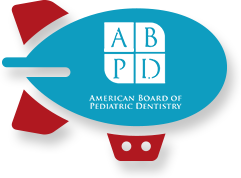Drink Water to Celebrate National Children’s Dental Health Month
February 2nd, 2017

February is National Children’s Dental Health Month, and the theme this year is “Choose Tap Water for a Sparkling Smile.” National Children’s Dental Health Month is organized by the American Dental Association (ADA), and brings together dental professionals, healthcare providers and educators to promote the benefits of oral health to children. Tooth decay is the most prevalent – and preventable – disease in children, but drinking more tap water can help prevent cavities. Drinking more water has a number of practical benefits which help improve oral health.
Improves Saliva Production
Did you know that saliva is 99% water? Or that saliva is critical in the fight against cavities? This makes it imperative that you drink plenty of water so that you can keep your enamel strong, and stay cavity-free. When you are low on saliva, you will most likely experience dry mouth – a condition that makes it hard to swallow and chew because of a lack of saliva. By drinking enough water, you help prevent dry mouth and ensure that your saliva is produced at an optimal rate.

Tap Water Contains Fluoride
Tap water contains small amounts of fluoride – which is great for teeth. Fluoride consumption is effective in preventing tooth decay by at least 25% in children and adults, according to the ADA. The Center for Disease Control and Prevention said that community water fluoridation is one of the 10 great public health achievements of the 20th century.
Clears Teeth of Sugar
After you’re done eating, there can be leftover food particles between your teeth, and sugar residue left on tooth surfaces that can lead to cavities. You can clear your teeth of unwanted sugar buildup by rinsing your mouth with water immediately after you eat. Simply swish water around for 30 seconds after you eat to clear your teeth of any sugary or food debris leftover from you previous meal.
Water has No Calories
Rising consumption in sugary beverages has been a major contributor to the increasing rate of obesity in the United States. In fact, people who consume 1 – 2 sugary beverages per day are 26% more likely to develop type 2 diabetes. This can be avoided by substituting colas, sugary juices and sports drinks with a glass of water. Water doesn’t have any calories, and it contains no sugar, which makes it incredibly healthy.
Encourage Your Child to Drink More Water
Water is unlike any other drink, and is by far the healthiest drink available. Generally speaking, children should abide by the 8 X 8 adage: 8 glasses of water in 8 oz glasses per day. If you’re worried that your child may not be drinking enough water, then bring them into our office for a consultation. We will thoroughly evaluate your child’s teeth, and provide you with flexible treatment options that are right for them.

 Ah the internet. It can be a fantastic resource to access an infinite amount of knowledge and data, or it can be used to spread baseless rumors that confuse otherwise intelligent people. Unfortunately, the internet has made it much easier for people to share healthcare myths that can mislead people into making unhealthy decisions. Below are a few dental myths, and the facts behind them.
Ah the internet. It can be a fantastic resource to access an infinite amount of knowledge and data, or it can be used to spread baseless rumors that confuse otherwise intelligent people. Unfortunately, the internet has made it much easier for people to share healthcare myths that can mislead people into making unhealthy decisions. Below are a few dental myths, and the facts behind them.
 Mastic tree gum.[/caption]
Mastic tree gum.[/caption] The sapodilla tree.[/caption]
The sapodilla tree.[/caption]

